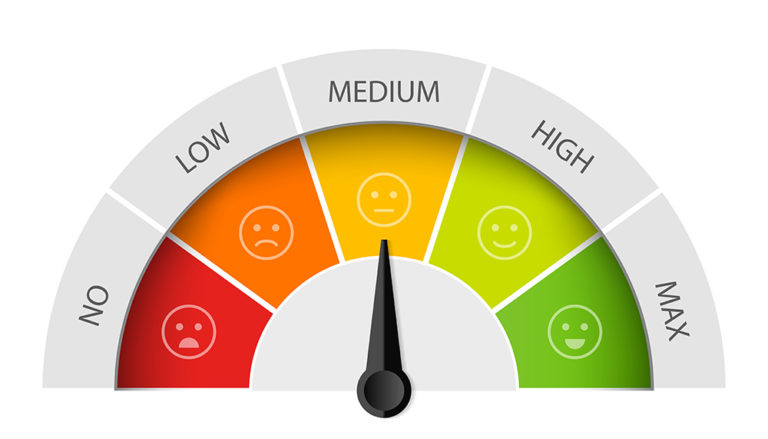Low employee engagement may not be as visible as other business challenges, but its impact can be significant and costly. When employees aren’t engaged, it affects productivity, customer satisfaction, team morale, and ultimately, the bottom line. In this blog, we’ll explore the true cost of low employee engagement, showing why companies must invest in strategies that keep their teams motivated, connected, and invested in their work.
What is Low Employee Engagement?

Low employee engagement occurs when employees feel disconnected, unmotivated, and uninspired in their roles. In this state, employees may lack enthusiasm for their work, feel uncommitted to the company’s goals, and see their job as just a paycheck rather than something they care about.
Employees with low engagement tend to be less productive, often doing the bare minimum to get by, and may experience feelings of dissatisfaction or even frustration with their work. When engagement levels are low, the entire organization feels the effects, as it can disrupt workflow, lower overall morale, and ultimately affect the company’s success.
What is The Cost of Low Employee Engagement?
The cost of low employee engagement can be substantial, affecting various aspects of a company’s performance and bottom line. Here are some of the main ways low engagement costs businesses:
Reduced Productivity
- Disengaged employees are often less motivated and tend to do the bare minimum, which leads to lower productivity. When employees aren’t fully invested in their work, tasks take longer, quality may suffer, and deadlines can be missed. This drop in productivity can significantly impact team performance and the company’s overall output.
Higher Turnover and Recruitment Costs
- Low engagement is closely tied to higher employee turnover. When employees don’t feel connected to their work or valued by the company, they’re more likely to leave. This creates frequent vacancies that require additional time and resources to fill, driving up recruitment, training, and onboarding costs. Hence, retaining talent becomes challenging, and constant turnover disrupts team cohesion.
Increased Absenteeism
- Disengaged employees are more likely to call in sick or take unscheduled time off, leading to higher absenteeism rates. Frequent absences disrupt workflow, increase workloads for others, and lead to further declines in team productivity. Absenteeism due to low engagement can quickly add up costs, both financially and in terms of team morale.
Lower Customer Satisfaction
- Employees who are disengaged are less likely to go above and beyond for customers. This lack of enthusiasm can lead to poor customer interactions, longer response times, and subpar service. Customer dissatisfaction often follows, which can harm the company’s reputation and lead to lost business and lower customer loyalty.
Reduced Innovation and Creativity
- Engaged employees are more likely to share ideas, collaborate, and contribute to creative solutions. When engagement is low, employees may not feel motivated to think innovatively or contribute beyond their basic responsibilities. This lack of creativity can slow down growth and leave the company behind competitors who foster a more engaged, dynamic environment.
Lower Team Morale and Workplace Culture
- Low engagement can spread negativity throughout the workplace, leading to poor team morale. When employees aren’t engaged, it can create a tense, unmotivated work environment that affects everyone’s attitude and sense of camaraderie. Hence, this low morale impacts overall workplace culture and can make it challenging to attract and retain positive, motivated talent.
Negative Financial Impact
- Each of these factors—reduced productivity, turnover, absenteeism, and poor customer satisfaction—contributes to a direct financial impact on the business. Studies show that low employee engagement can cost companies thousands of dollars per employee each year in lost revenue, with some estimates suggesting up to 34% of an employee’s salary in lost productivity alone.
Thus, low employee engagement can lead to higher costs and lower profitability. So, investing in engagement strategies is essential for creating a positive work environment, supporting team morale, and boosting both employee and company success.
How Much Does Low Productivity Cost the Workplace?
 Low productivity can be incredibly costly for workplaces, translating to substantial financial losses over time. Research indicates that disengaged or low-productivity employees can cost companies thousands of dollars per person each year, with some estimates suggesting productivity losses totaling between 20-30% of an organization’s annual revenue.
Low productivity can be incredibly costly for workplaces, translating to substantial financial losses over time. Research indicates that disengaged or low-productivity employees can cost companies thousands of dollars per person each year, with some estimates suggesting productivity losses totaling between 20-30% of an organization’s annual revenue.
When employees aren’t fully engaged, tasks take longer, and overall output decreases, which means the business is not operating at its full potential. For large companies, this inefficiency can result in millions of dollars in lost revenue, while smaller businesses may struggle to maintain profitability or compete effectively in the market.
How to Manage Cost of Low Employee Engagement?
 Managing the costs of low employee engagement involves creating a proactive strategy to foster a more motivated, connected, and productive workforce. Here are some effective ways to address and reduce the cost of low employee engagement:
Managing the costs of low employee engagement involves creating a proactive strategy to foster a more motivated, connected, and productive workforce. Here are some effective ways to address and reduce the cost of low employee engagement:
1. Conduct Regular Engagement Surveys
Use engagement surveys to understand how employees feel about their roles, the company, and the work environment. Analyzing feedback helps identify specific areas where engagement is low, allowing you to take targeted actions. Regular check-ins, such as pulse surveys, also keep engagement in focus and show employees that their input matters.
2. Invest in Employee Development Programs
Providing training, mentorship, and career development opportunities keeps employees engaged by helping them grow and advance. Development programs not only enhance skill sets but also demonstrate the company’s commitment to its long-term success.
3. Enhance Recognition and Reward Systems
Recognizing and rewarding employees’ hard work boosts morale and motivation, directly combating disengagement. Implement structured recognition programs that celebrate milestones, achievements, and contributions regularly. Simple actions like public recognition, awards, bonuses, or even “thank you” messages go a long way in making employees feel valued.
4. Foster Open Communication and Transparency
Open communication builds trust and keeps employees informed and aligned with company goals. Create channels for two-way communication, encourage honest feedback, and ensure transparency in decision-making processes. So, when employees feel they’re part of the bigger picture, they’re more likely to stay engaged and invested in their roles.
5. Improve Work-Life Balance
Supporting work-life balance through flexible hours, remote work options, and promoting time off can reduce burnout and improve engagement. When employees feel they have control over their time, they’re more productive and motivated at work. Work-life balance initiatives help reduce absenteeism and increase job satisfaction, leading to better retention.
6. Provide Opportunities for Employee Autonomy
Trusting employees with decision-making in their roles can increase their sense of ownership and engagement. Allowing employees more control over their tasks and encouraging them to innovate fosters a sense of pride in their work. This autonomy increases motivation and productivity, reducing disengagement costs.
By implementing these strategies, companies can actively reduce the costs of low employee engagement, creating a more productive and positive workplace. Hence, engaged employees are more committed, perform better, and contribute to long-term organizational success.
Conclusion
In short, the cost of low employee engagement can be a lot, but there are effective ways to manage and even prevent these costs. By focusing on open communication, recognizing employees’ efforts, supporting their growth, and creating a positive workplace culture, you can help employees feel more connected and motivated. Simple actions, like showing appreciation and offering career development, go a long way in boosting engagement.
Ultimately, when employees feel valued and supported, they’re more productive, and your company saves on the hidden costs of disengagement. Taking these steps is a win-win for everyone involved. Mantra Care is a platform designed to help you find the perfect employee engagement challenges tailored to your team’s needs.
A Word From MantraCare Wellness
Employee wellness programs are the key to improving employee motivation, productivity, and retention. At MantraCare Wellness, we have a team of health experts, counselors, and coaches who serve corporate employees with 10+ well-being programs including EAP, Employee Diabetes Reversal, Corporate MSK, PCOS, Employee Fitness, Corporate Yoga, Employee meditation, and Employee Smoking Cessation.



